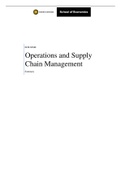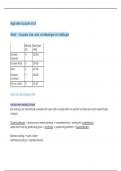Samenvatting
Operations & Supply Chain Management - Summary
- Vak
- Instelling
In this summary, all the parts from the book that need to be studied are summarized, as well as the lecture slides from both the lecturer and the guest lectures. I mainly put the emphasis on the theoretical part of the course and left out the calculation parts. These can be found in the other summa...
[Meer zien]




